The history of Indian railways traces back to the early 19th century when the country’s first railway line was constructed. Among the oldest railways in India is the Great Indian Peninsula Railway (GIPR), established in 1853. This pioneering railway, connecting Bombay (now Mumbai) with Thane, marked the inception of a transformative era in India’s transportation landscape. As the backbone of India’s industrial and social development, these early railways not only facilitated the movement of goods and people but also played a pivotal role in shaping the nation’s economic and cultural identity. Buckle up, for today, we’ll discuss the top ten oldest railway stations in India.
Chhatrapati Shivaji Terminus
The Chhatrapati Shivaji Terminus (formerly Victoria Terminus and Bori Station) is the oldest railway station in India. Initially, it was the site of the Bori Bunder railway station, which was built in 1853. However, it was later rebuilt. The construction of the new railway station started in 1887 and finished in May 1888 at Fort, Mumbai, Maharashtra. It was designed by Frederick William Stevens, inspired by the initial design of Alex Haig. The structure is designed as a fusion of Italian and Indian Gothic-style architecture.
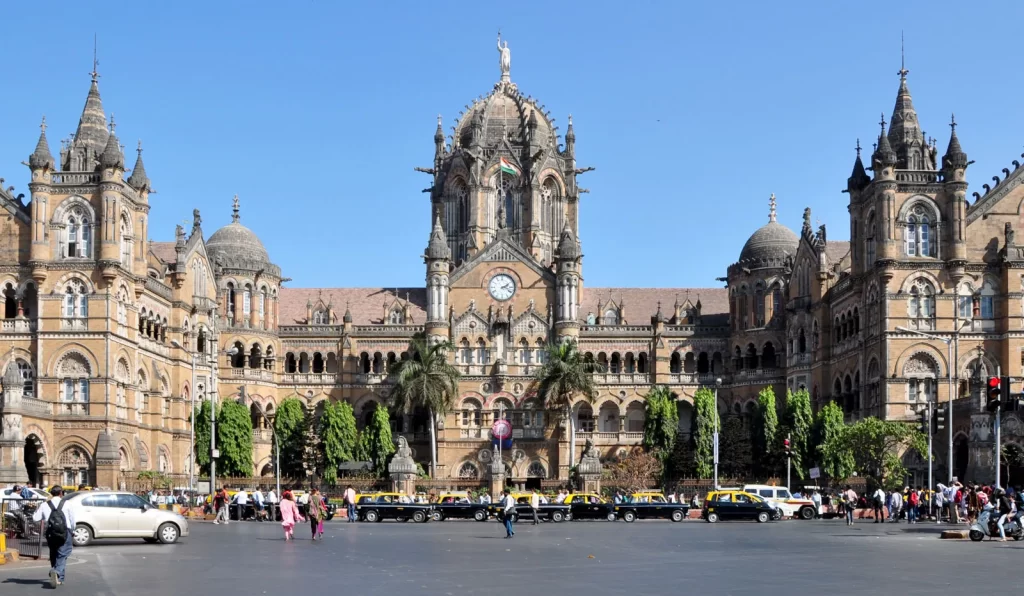
The architectural features such as skyline, turrets, pointed arches, and unusual ground plan are typical of classical Indian palace design. Sir JJ School of Art students created the wood carving, tiles, ornate iron and brass railings, ticket office grills, and handrails. The 1,200-foot-long train shed is connected to the 330-foot-long platform of the centrally domed office structure. The dome of Chhatrapati Shivaji Terminus is a ribbed octagon, topped by a female figurine with a torch in her right hand and a spoked wheel in her left. A mixture of limestone and sandstone was used to build the main structure, and Italian marble was used for the decorative features.
Howrah Junction
The Howrah Junction is located in Howrah Kolkata. It was built in 1854 with one platform, housed within one small hut. It was a large columnar building made of red bricks with a single platform and a corrugated iron sheet roof. It was renovated between 1900 and 1911, featuring Romanesque and Moorish architectural styles. The new building was designed by Halsey Ricardo. The present iteration of the Howrah junction may be described as a massive red brick conglomerate of English prisons and Tibetan monasteries. The façade is dominated by eight towers, two of which have solid square tops and six have wide eaves. It also features a clock tower with ornate designs and elaborate mechanisms.
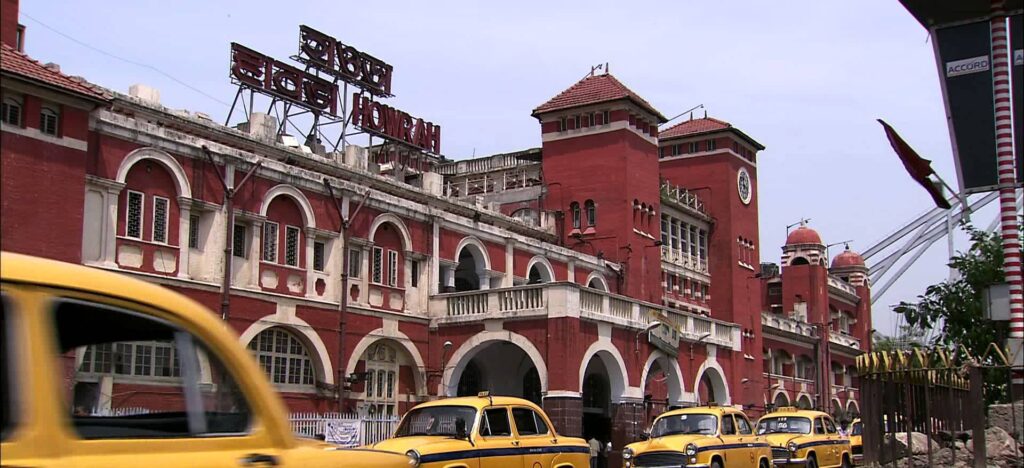
Roya Puram Railway Station
The Roya Puram Railway Station is in Royapuram, Chennai, Tamil Nadu. The construction of the railway station began in 1853 and finished in June 1856. A month later, the station became operational. The station building is essentially a heritage structure, distinguished by its pointed arches, ionic pillars, and high ceilings. It is constructed of red bricks and has vivid red and white colours. The station is a perfect example of Victorian Gothic architecture. Old photos of the station taken before its restoration can be found in the station hall. Antique beams support the office’s sloping, enormous roof.
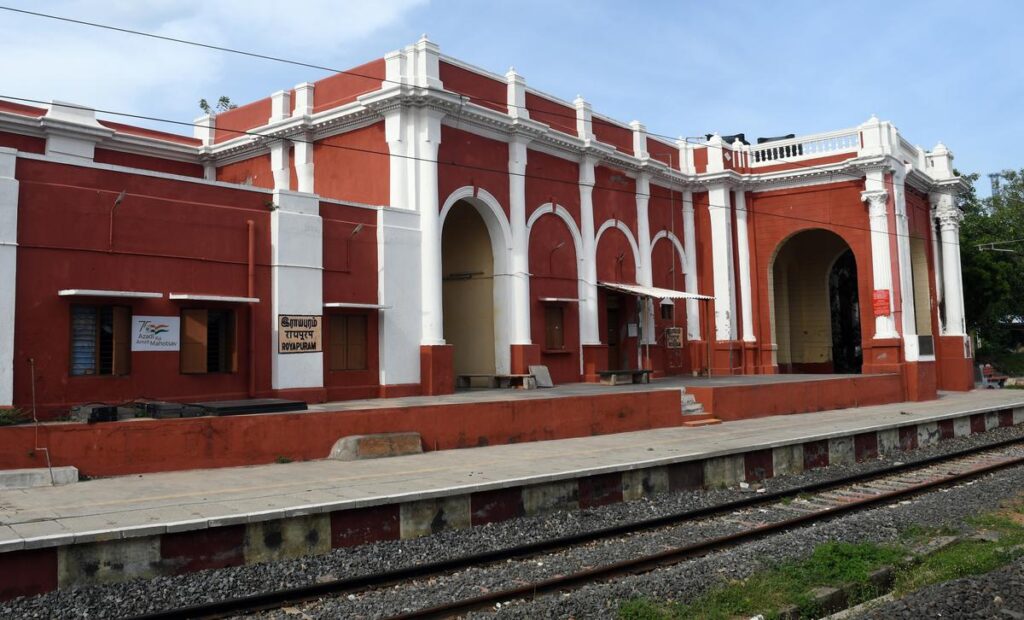
Kanpur Central
The Kanpur Central Railway Station, formerly called Cawnpur North Barracks, is in Kanpur, Uttar Pradesh. It finished construction in 1859, from whence the first train to Allahabad originated. The building has been the subject of numerous renovation attempts. The first iteration made extensive use of the ‘Doric Capital’ columns alongside its length.
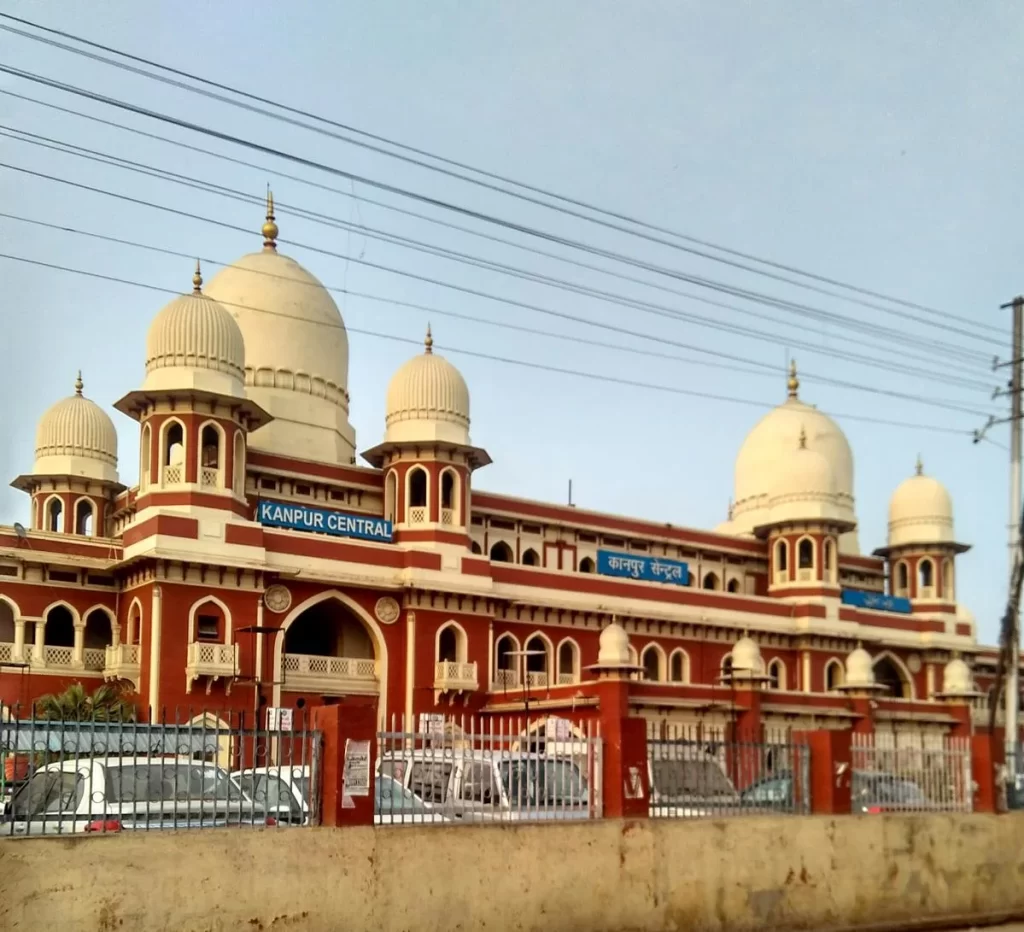
The Kanpur Central is a beautiful example of Indo-Saracenic architecture and Awadhi architecture. The rail-side features include a broad platform, offices, and waiting areas. A barrel-roof structure rests atop an arcade across the platform line. The new station building featured charming pavilions, railings, balconies and grilles with delicate decorative filigree work, arcades of pointed arches at three levels, and prominent ribbed domes with beautiful finials on top.
Allahabad Junction
Allahabad Junction is the former name of the Prayagraj Junction Railway Station. It is located in Leader Road, Prayagraj, Uttar Pradesh. The construction of the junction started in 1855 and finished in 1859. In 1882, a workshop and repair store was built near the junction. The junction is being renovated as we speak. The newest iteration of Allahabad Junction will feature VIP lounges, ramps, automated stairs, lifts, and multi-level parking services, amongst others.
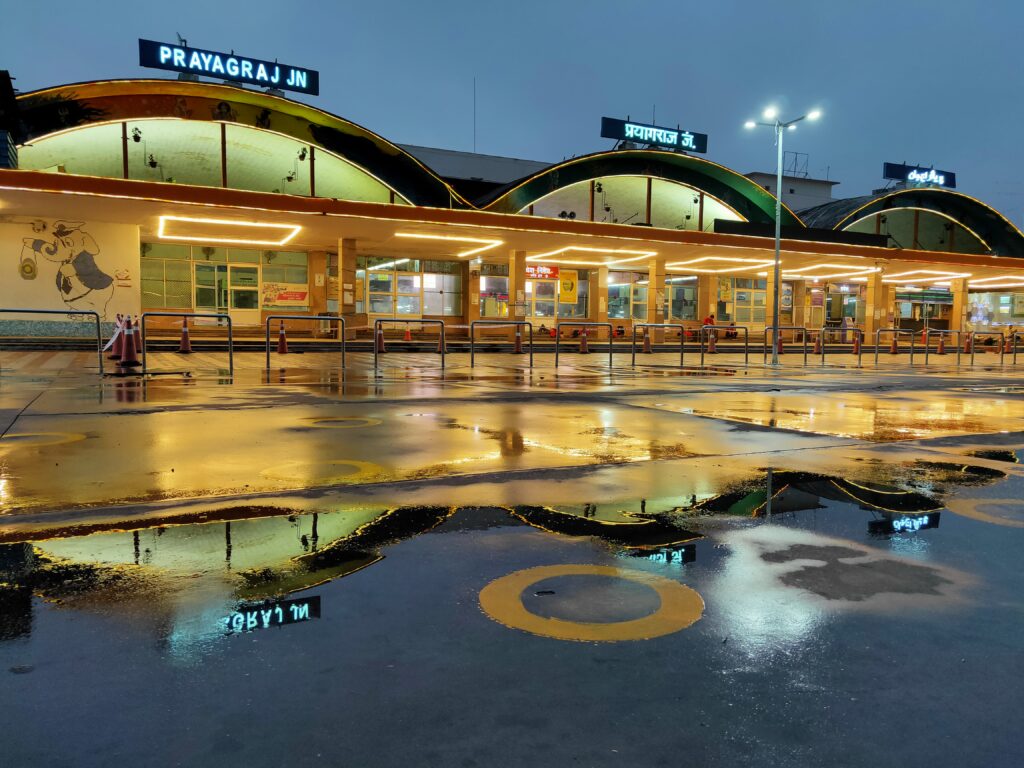
Vadodara Junction
The Vadodara Junction (formerly, Baroda City Junction) was built in 1861 by Maharaja Khanderao. It is located in Sayajiganj, Vadodara, Gujarat. The current building was constructed by the Indian Railways on the remnants of the older building in 1954. The new building has a biophilic design, resembling the gravitating roots of a banyan tree.
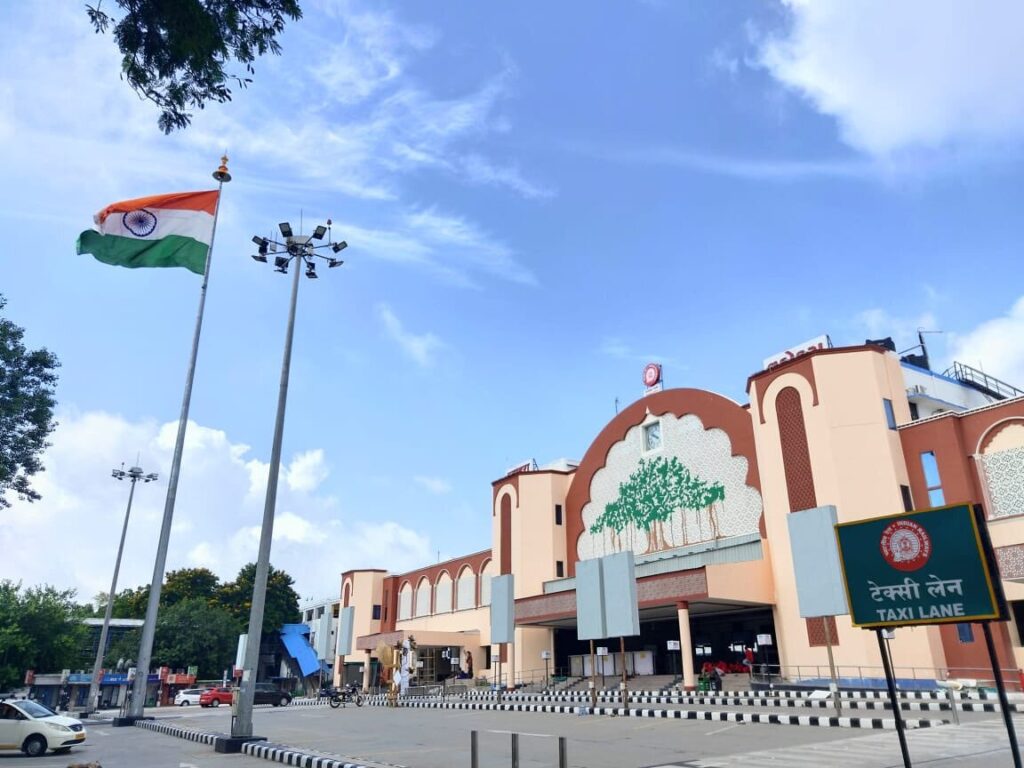
Old Delhi Railway Station
The Old Delhi Railway Station named ‘Delhi Junction’ was constructed in 1864 near Chandni Chowk with two small platforms. It was formerly called Purani Dilli Junction and Lahore Railway Station. It was renovated in 1903, with a style akin to the Red Fort. The two-story building has Gothic features, such as high vaulted ceilings and arches. Both floors have deep verandahs, and the corners are crowned with semi-octagonal turrets. The station has about six towers that could house cannons, arranged like a fortress. The Old Delhi Railway Station has a red and cream facade. The station has already undergone renovations, including false ceilings and LED lighting, big display screens, golf carts that run on batteries, and a garden in front of the main gates.
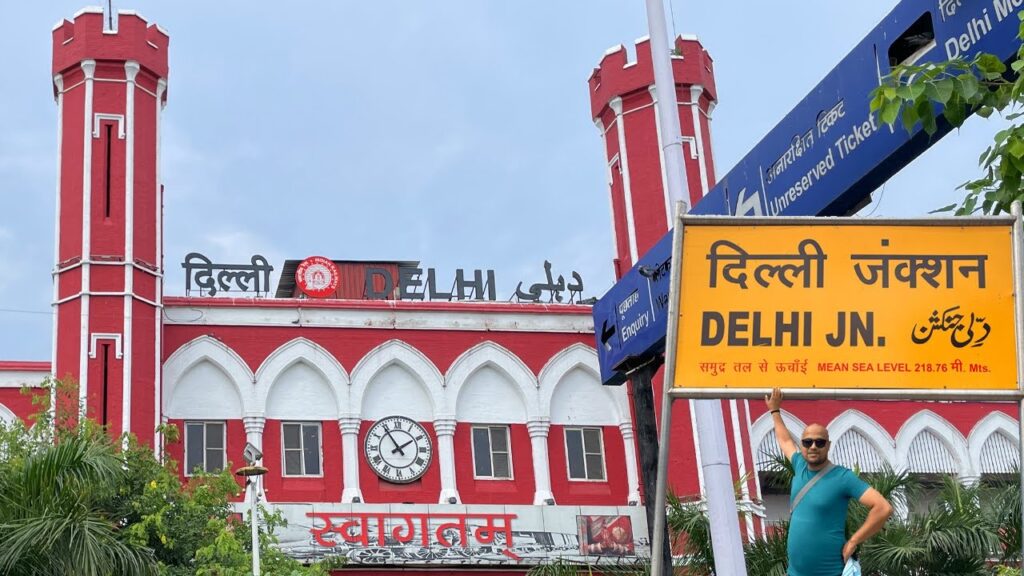
Madras Central
Madras Central (Chennai Central), officially Puratchi Thalaivar Dr M.G. Ramachandran Central Railway Station is located in Periyamet, Chennai, Tamil Nadu. It was constructed between 1862 and 1873 and rebuilt twice; in 1959 and 1998. George Harding designed the original station, which had four platforms and was constructed in the Gothic Revival style. Robert Fellowes Chisholm made alterations to the station, including the addition of the central clock tower and Travancore ‘caps’ on the main towers. The main building of the Old Delhi Railway Station combines Romanesque and Gothic architectural elements. At 136 feet, the four-faced clock tower is the tallest. It chimes every quarter of an hour. The two-story structure features a smaller turret, along with the verandahs, balconies, and twin segmental arch openings.

Agra Fort Railway Station
The Agra Fort Railway Station is located in Rakabganj, Agra, Uttar Pradesh. It was constructed in 1873. Situated near the Agra Fort’s perimeter, this double-storey structure boasts a symmetrical façade. Segmental arches adorn the front verandah, and a crest rests along the first floor’s parapet. There is a lean-to-roof tower with a parapet that is crenellated and a tiled roof.
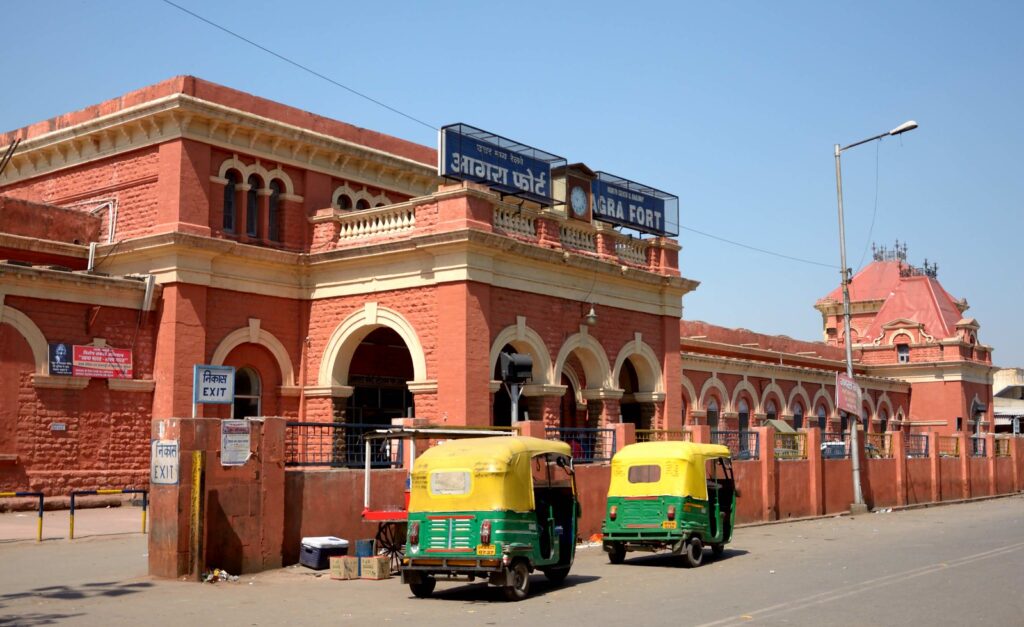
Jhansi Junction
The Jhansi Junction Railway Station or Virangana Lakshmibai Jhansi Railway Station is located in Jhansi, Uttar Pradesh. It was constructed in the late 1880s. The two-story station building has a verandah running along the front in the colonial architectural style. Three bays of twin segmental arches with rectangular porches are also present. The roof is made up of gable-end lean-to roofs and terraces. The facade also features circular clerestories, dentilled cornices, hood mouldings over arches, and balustrade parapets. The Jhansi Junction is painted off-white and maroon.

Image Courtesy – Thrillophilia





